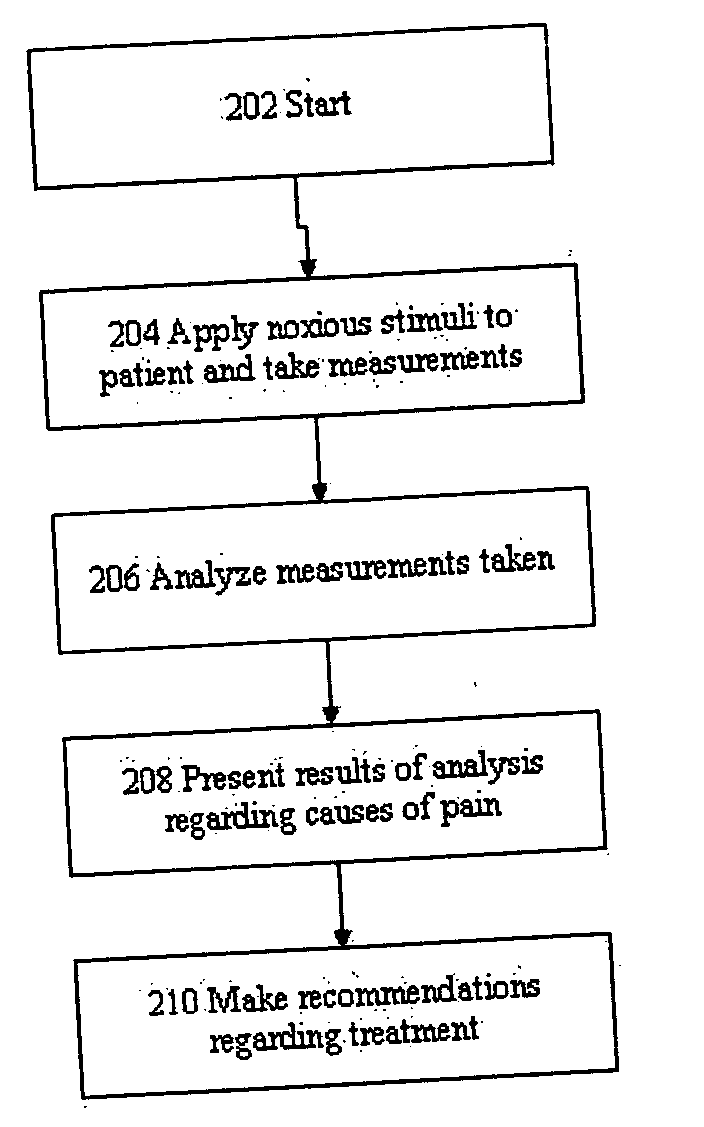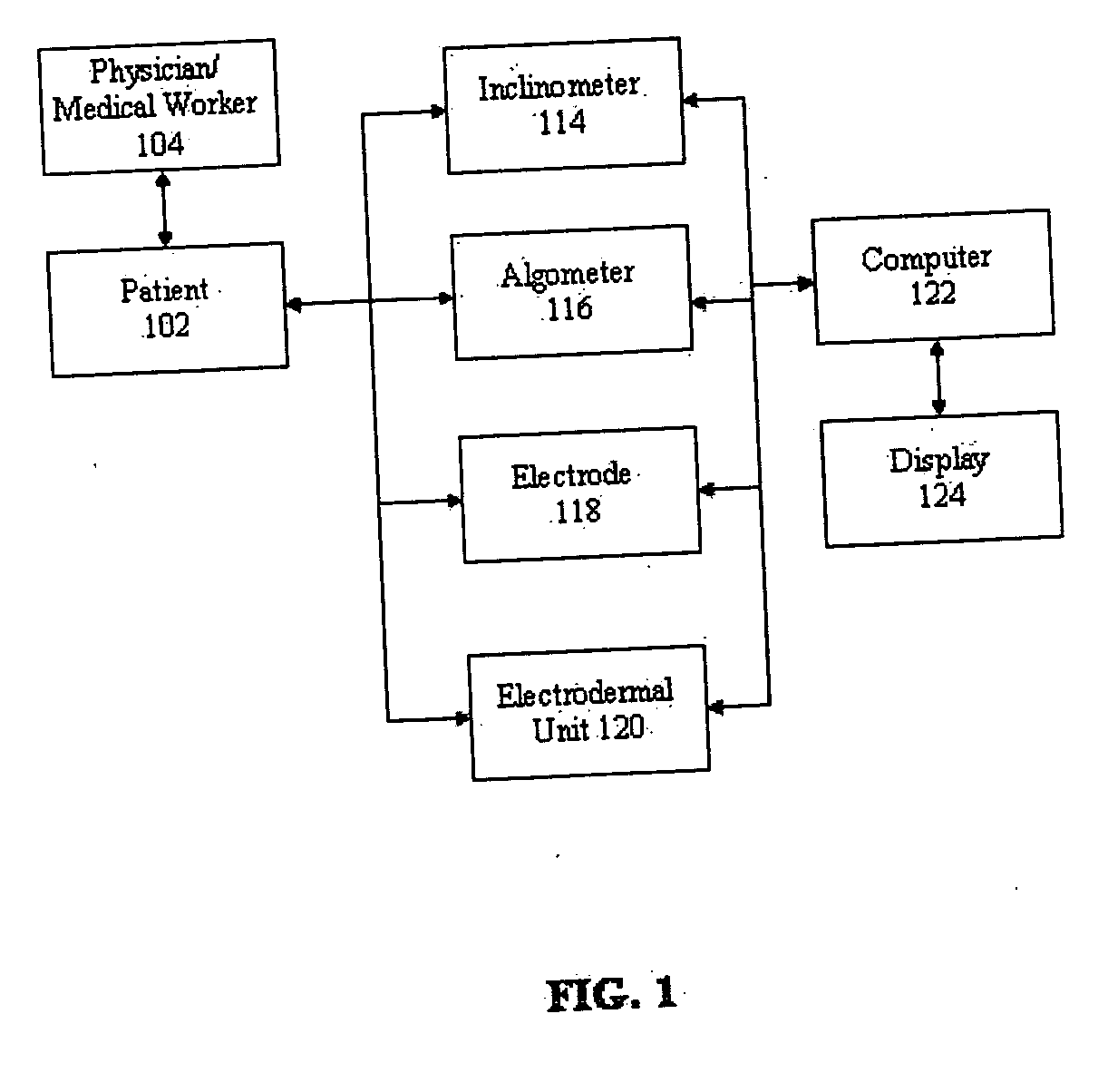Evaluation of pain in humans
a human and pain technology, applied in the field of medicine, can solve problems such as difficult to assess in an unbiased, qualitative and quantitative fashion, and the complexity of the psychosocial milieu of alleged injuries, and achieve the effects of improving the problem, and reducing the quality of li
- Summary
- Abstract
- Description
- Claims
- Application Information
AI Technical Summary
Benefits of technology
Problems solved by technology
Method used
Image
Examples
Embodiment Construction
[0042] According to an embodiment of the present invention, a method for evaluating the human pain experience is disclosed. The method combines at lest five elements: (1) a pre-test history and physical exam (2) the precise application of quantifiable sensory stimuli (pressure stimuli, active or passive range of motion stimuli, or the cutaneous sensory stimuli in the form of electrical current) to the patient; (3) the application of these stimuli to specific patient-controlled levels of response (i.e., pain threshold, or pain tolerance levels as defined by the IASP); (4) the simultaneous recording of the patient's verbal response and non-verbal body reactions: and (5) the use of the patient as his or her own control by comparing the “baseline / normative” response taken at an asymptomatic site versus the specific “painful / test” site. One embodiment of the present invention (a) precisely monitors in individuals the temporal and quantifiable relationships of sensory stimuli with simulta...
PUM
 Login to View More
Login to View More Abstract
Description
Claims
Application Information
 Login to View More
Login to View More - R&D
- Intellectual Property
- Life Sciences
- Materials
- Tech Scout
- Unparalleled Data Quality
- Higher Quality Content
- 60% Fewer Hallucinations
Browse by: Latest US Patents, China's latest patents, Technical Efficacy Thesaurus, Application Domain, Technology Topic, Popular Technical Reports.
© 2025 PatSnap. All rights reserved.Legal|Privacy policy|Modern Slavery Act Transparency Statement|Sitemap|About US| Contact US: help@patsnap.com



